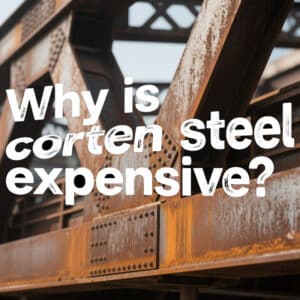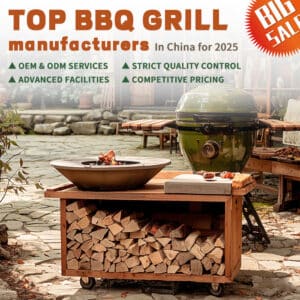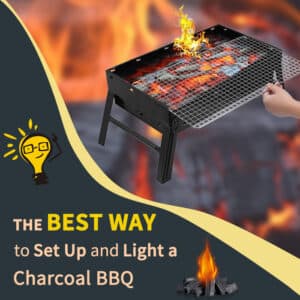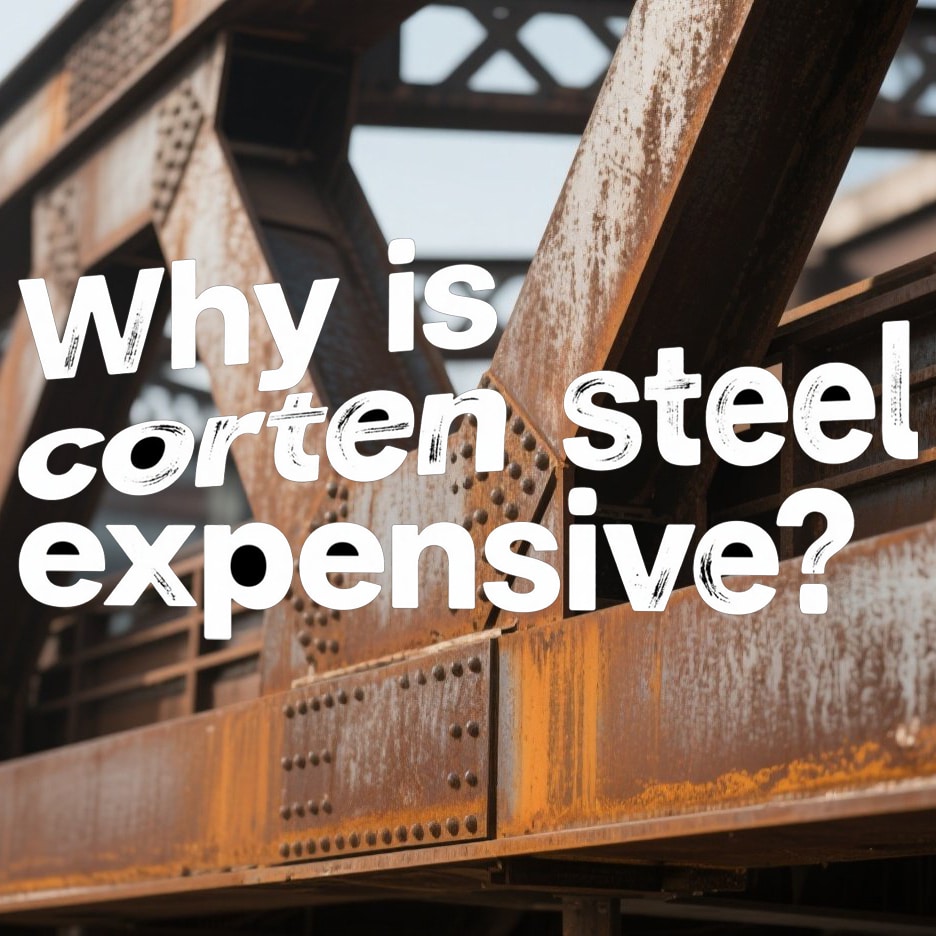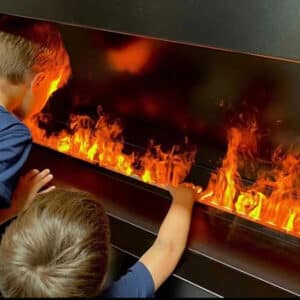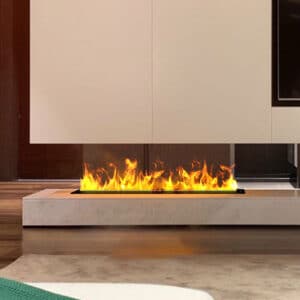Before we dive into why Corten steel is more expensive than conventional materials, let’s first understand what it is.
what is corten steel?
Corten steel, also known as weathering steel, is a special type of alloy steel. It’s designed to resist atmospheric corrosion by adding alloying elements such as copper (Cu), chromium (Cr), nickel (Ni), and phosphorus (P). These elements help form a stable, protective rust layer on the surface, which prevents the inner steel from further corrosion.
Typical Chemical Composition of Corten Steel (e.g., ASTM A588 Grade A)
| Element | Symbol | Content Range | Function |
|---|---|---|---|
| Carbon | C | ≤ 0.19% | Increases strength and hardness, but too much reduces toughness and weldability. |
| Manganese | Mn | 0.50 – 1.35% | Enhances strength and wear resistance; improves hot workability. |
| Phosphorus | P | ≤ 0.04% | Promotes protective patina formation and improves atmospheric corrosion resistance. |
| Sulfur | S | ≤ 0.05% | Considered a harmful impurity; kept as low as possible. |
| Silicon | Si | 0.25 – 0.75% | Improves oxidation resistance and enhances performance at high temperatures. |
| Copper | Cu | 0.25 – 0.55% | Aids in forming a stable rust layer; key to weathering resistance. |
| Chromium | Cr | 0.40 – 0.65% | Improves corrosion resistance and mechanical strength. |
| Nickel | Ni | ≤ 0.40% | Enhances corrosion resistance and toughness. |
| Iron (Base) | Fe | Balance | Primary structural element making up the bulk of the alloy. |
💡 Note: The chemical composition may vary slightly depending on specific grades and standards (e.g., ASTM A588, A242, EN 10025-5, GB/T 4171). Always refer to the exact material specification when sourcing or engineering with Corten steel.
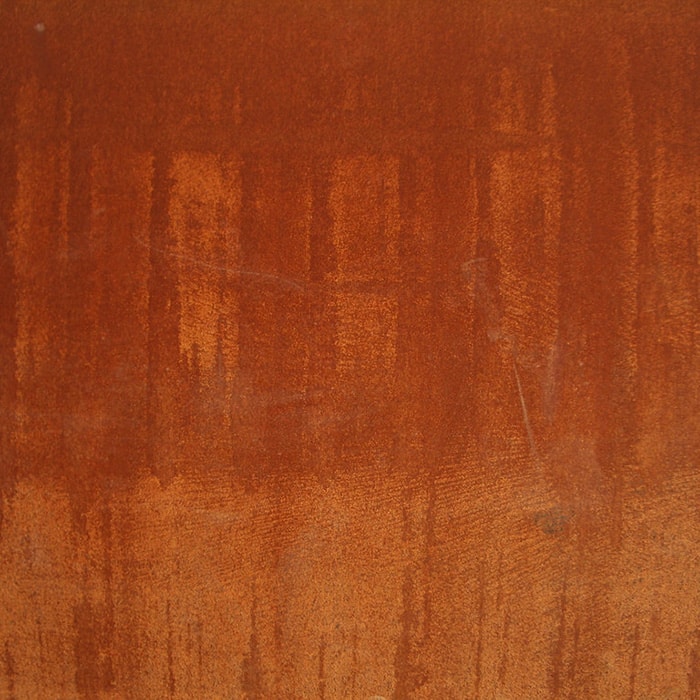
So, why is Corten steel expensive?
There are several key reasons why the cost of Corten steel products is generally higher than that of regular carbon steel or other standard materials:
1. Higher Raw Material Costs
The added alloying elements—especially nickel, chromium, and copper—are significantly more expensive than basic iron ore or common elements like carbon and manganese. Nickel, in particular, has a volatile market price and greatly impacts overall cost.
Although the amount added is not huge, it accumulates and drives up material expenses. Additionally, the tighter composition control during production increases the risk of rejected batches, further adding to cost.
2. More Complex and Demanding Manufacturing Process
Producing Corten steel requires precise process control. The smelting process needs accurate control of temperature, timing, deoxidation, and degassing. Refining may also be stricter to keep impurities like sulfur and phosphorus at low levels.
Rolling and potential heat treatment processes—such as controlled rolling and cooling—must be fine-tuned to achieve the desired mechanical properties (strength and toughness) and to encourage the formation of the protective rust layer.
This means more advanced equipment and higher energy use, leading to increased production and operational costs.
3. R&D and Certification Requirements
Developing Corten steel involves considerable research, including alloy ratio testing and corrosion resistance analysis. These R&D costs are factored into the product pricing.
Furthermore, different markets follow different standards—for example, Corten series in the U.S., ASTM A588, A606, A242; EN 10025-5 in Europe; GB/T 4171 in China.
Products must comply with these standards to be sold. The certification process—especially lab testing and long-term outdoor exposure tests (which can last years or even over a decade)—is time-consuming and costly. These expenses are ultimately passed on to the customer.
4. Limited Production Scale
Compared to widely used carbon steels like Q235 or Q355, Corten steel has a smaller market and is used mainly in niche applications.
Because of this, it lacks the scale of mass production that helps reduce unit costs through economies of scale. Lower production volumes mean that fixed costs such as equipment depreciation, R&D, and overhead cannot be spread out as efficiently, resulting in a higher cost per unit.
5. Performance Premium
The key value of Corten steel lies in its long-term, low-maintenance performance. Its stable rust layer protects the steel core, eliminating the need for regular painting and maintenance typically required for conventional steel.
This avoids major expenses such as anti-corrosion coatings, labor, downtime, and environmental disposal.
That’s why Corten steel is widely used in high-end applications that demand both durability and visual appeal—like building facades, bridges, sculptures, shipping containers, railway cars, and public art installations.
These high-performance applications also demand careful handling during fabrication and transportation, including strict welding procedures and clean surface conditions to ensure optimal rust layer development—adding to the overall cost.
In Conclusion: It’s Expensive for a Reason
The higher price of Corten steel is justified by several factors:
The cost of high-value alloy elements
Stricter and more refined production processes
Investment in research, development, and certification
Limited production scale
And most importantly, its long-term cost-saving performance with little to no maintenance required
For users who value quality, design, and longevity, Corten steel is a worthwhile investment.
